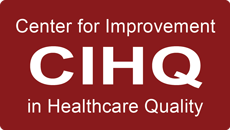
Importance of Healthcare Regulatory Compliance
The healthcare industry is a highly regulated field where patient safety and quality is paramount. Regulatory compliance is essential to ensure that healthcare facilities provide safe, effective, and high-quality care. Among the many aspects of compliance, Indoor Air Quality (IAQ), Life-Safety Systems, and Critical Equipment Preventative Maintenance (PM) schedules stand out as crucial elements for healthcare organizations.

The Role of Indoor Air Quality
Indoor Air Quality (IAQ) has a profound impact on the well-being of patients and staff in healthcare facilities. Poor IAQ can lead to respiratory issues, infections, and other health problems. Regulatory standards exist to ensure that healthcare facilities maintain air quality that is safe and conducive to healing.
Life-Safety Systems and Critical Equipment
Life-Safety Systems encompass fire safety measures, emergency preparedness, and security systems, all of which are vital for the protection of patients and staff. In addition, critical medical equipment must be meticulously maintained to ensure uninterrupted patient care. Regulatory compliance in these areas is essential to safeguard lives and property.
Indoor Air Quality Standards in Healthcare Facilities
Regulatory Framework
Regulatory bodies such as the Environmental Protection Agency (EPA), Occupational Safety and Health Administration (OSHA), and the Centers for Medicare & Medicaid Services (CMS) have set IAQ standards for healthcare facilities. Compliance with these standards requires regular monitoring, management, control, and maintenance.
Compliance Challenges
Healthcare facilities face challenges in maintaining IAQ standards due to factors like aging infrastructure, budget constraints, and evolving regulations. Compliance involves filtration, ventilation, temperature, and humidity control systems.
IAQ Monitoring and Management
To meet IAQ standards, healthcare facilities should implement monitoring and control systems and promptly address issues. Energy-efficient building automation technologies and systems (BAS), can play a pivotal role in achieving and maintaining compliance, offering long-term utility cost savings.
Life-Safety Systems in Healthcare
Fire Safety and Emergency Preparedness
Fire safety and emergency preparedness are non-negotiable aspects for healthcare organizations. Compliance ensures that healthcare facilities are ready to handle emergencies timely and effectively, reducing the risk to patients and staff.
Compliance Requirements
Regulatory compliance in this area requires fire alarms, sprinkler systems, evacuation plans, and other engineered life-safety measures. Compliance also demands regular inspections, testing, and upgrades of these systems.
Upgrading and Maintenance
Many healthcare facilities grapple with the cost and complexity of upgrading life-safety systems. Implementing modern, energy-efficient BAS systems can enhance safety while reducing long-term operational costs.
Critical Equipment PM Schedules
Equipment Vitality in Healthcare
Critical medical equipment such as MRI machines, ventilators, and surgical equipment is fundamental to high-quality patient care. Regular maintenance of this equipment is crucial to prevent breakdowns and ensure patient safety.
Preventative Maintenance Importance
Regulatory bodies require healthcare facilities to establish and adhere to preventative maintenance schedules for critical equipment. Proactive maintenance not only ensures compliance but also extends the lifespan of equipment and reduces energy consumption.
Regulatory Expectations
Compliance involves documenting PM schedules, conducting routine checks, and keeping detailed maintenance records. Healthcare facilities must also plan for equipment replacement when necessary and should take energy-efficient options into account.
Innovative Financing Solutions
Energy as a Service (EaaS)
Energy as a Service (EaaS) is a financing model that provides healthcare facilities with the opportunity to outsource energy infrastructure management and maintenance with no up-front costs. EaaS providers assume responsibility for energy-related upgrades and improvements, often including HVAC/IAQ systems, life-safety systems, and critical equipment maintenance.
Energy Services Agreements (ESAs)
Energy Services Agreements (ESAs) allow healthcare facilities to partner with energy service companies (ESCOs) to achieve energy efficiency and compliance standards. ESAs can include the installation and maintenance of energy-efficient equipment with no up-front costs, providing a comprehensive solution for healthcare organizations.
Benefits for Healthcare Facilities
Both EaaS and ESAs offer healthcare facilities several advantages, including no upfront capital expenditure, improved energy efficiency, regulatory compliance, ongoing maintenance, and operating costs. These financing models enable healthcare organizations to focus on patient care while experts manage compliance and energy optimization.
Best Practices
Compliance Integration
Integrating IAQ standards, life-safety systems, and critical equipment PM schedules into a comprehensive compliance strategy is essential. Partnering with EaaS providers or entering ESAs can streamline these efforts.
EaaS and ESAs Considerations
Healthcare facilities must carefully evaluate potential EaaS and ESA partners, ensuring that they have the expertise and track record necessary to achieve compliance goals. Contract terms, performance guarantees, and cost-effectiveness should be evaluated carefully.
Regulatory Reporting and Documentation
Compliance requires detailed documentation, including maintenance records, IAQ monitoring results, and life-safety system tests. Maintaining these records is crucial to demonstrate adherence to regulatory standards.
Conclusion
The Path to Regulatory Compliance
Healthcare facilities face a daunting challenge in meeting IAQ standards, life-safety system requirements, and critical equipment PM schedules while maintaining operational efficiency. Innovative financing solutions such as EaaS and ESAs provide a path to compliance and offer numerous benefits to healthcare organizations.
A Safer and More Efficient Healthcare Environment
By embracing these financing models and integrating them into comprehensive compliance strategies, healthcare facilities can create a safer and more energy-efficient environment for patients and staff, ensuring regulatory compliance while reducing operational costs.
Future Trends in Healthcare Compliance
As healthcare regulations continue to evolve, healthcare organizations will need to stay ahead of compliance requirements. Innovative financing models will play an increasingly significant role in addressing these challenges and ensuring the highest standards of patient care and safety.
This whitepaper provides valuable insights into the complex landscape of healthcare regulatory compliance, emphasizing the pivotal role that Indoor Air Quality, Life-Safety Systems, and Critical Equipment Preventative Maintenance play in maintaining a safe and healthy healthcare environment. The adoption of Energy as a Service and Energy Services Agreements offers a transformative approach, allowing healthcare facilities to achieve compliance while optimizing energy efficiency and reducing operational costs. Compliance is not merely a regulatory requirement; it is a commitment to the well-being of patients and the enhancement of healthcare services.
